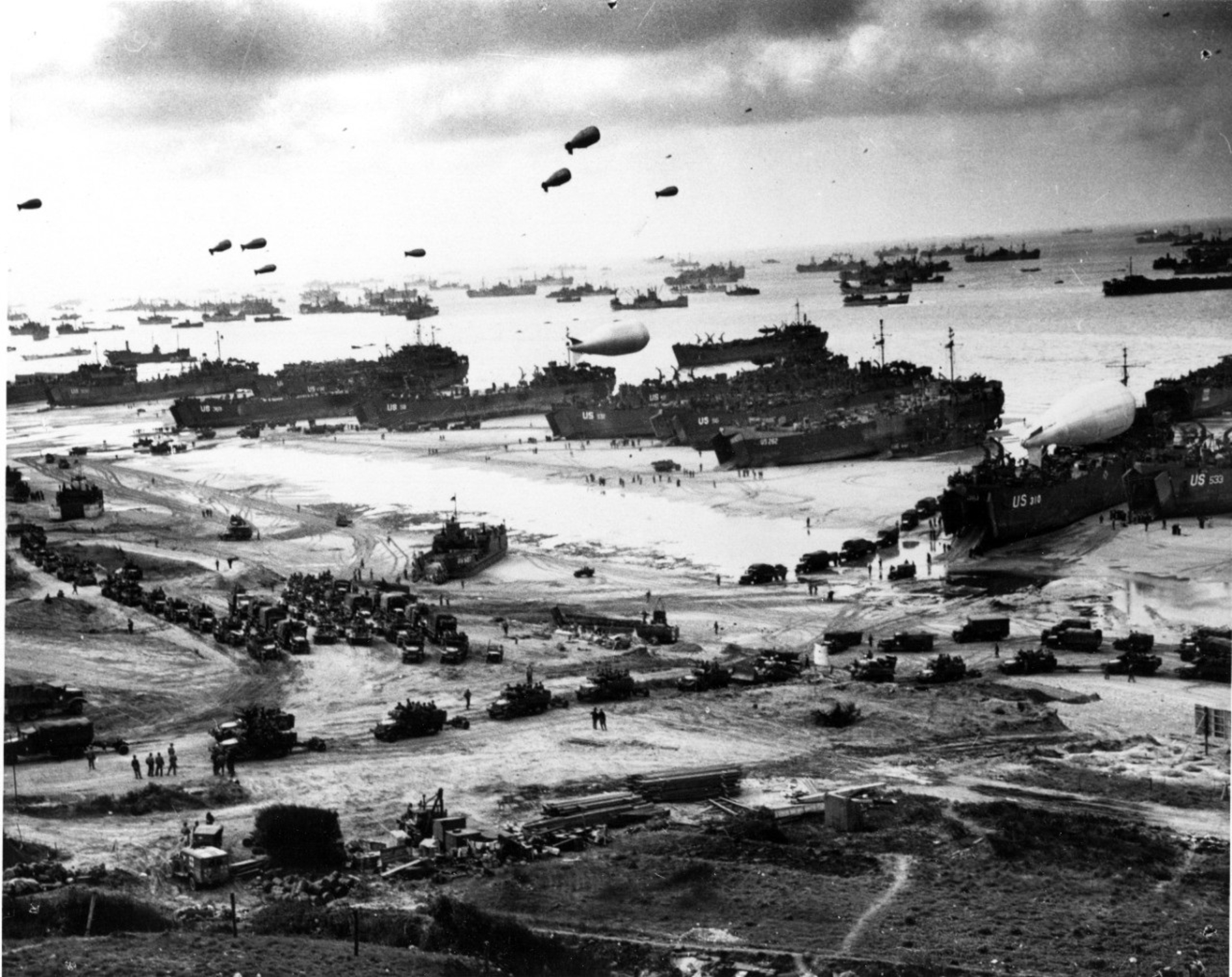
- Home
- An unprecedented endeavour
- Germany First!
First envisaged by Churchill during the desperate summer of 1940, the idea of regaining a foothold on the continent finally began to take shape when the United States entered the war in December 1941. However, the operation was postponed due to both the logistics of mobilising such vast resources and differing strategies among the Allies. At the Teheran Conference (28 November – 1 December 1943), the Anglo-Americans finally agreed to land in France in the spring of 1944.
The choice of Normandy
As early as the summer of 1943, Anglo-American military experts agreed that the landing should take place in the Baie de Seine. The Pas-de-Calais coastline, while much closer, was also better defended by powerful long-range artillery batteries.
The Allies thus chose Normandy, which was still within range of their fighter aircraft and offered vast beaches sheltered from the prevailing winds. Most importantly, the German defences were weaker there. The aim was to establish a secure lodgement to regroup troops and equipment, then take the deep-water port of Cherbourg from the interior, and establish airbases, before proceeding on to Brittany or the Seine.
Benefiting from previous operations
Appointed in December 1943 to lead the Allied Expeditionary Force, General Eisenhower revised previously established plans, expanding the initial assault zone, and thereby increasing the number of troops deployed. Five divisions (instead of three) would land in the first wave and a new lodgement was planned at the base of the Cotentin Peninsula in order to capture Cherbourg more quickly. From west to east, the five attack sectors were code-named Utah and Omaha (for the American divisions), Gold (British), Juno (Canadian) and Sword (British). Three airborne divisions would also defend the flanks of the offensive.
Operation Neptune, prelude to Operation Overlord, greatly benefited from previous landing experiences. The disastrous Dieppe raid (19 August 1942) had clearly demonstrated the importance of fire support. Sicily proved the need for air protection for the fleet. Lastly, Operation Avalanche at Salerno demonstrated the precision of naval artillery. Additionally, the bombardment planned for 6 June was substantial, totalling 86 vessels and 600 guns ranging in calibre from 100 to 381 mm. More than 8,000 tonnes of bombs were to be dropped by the Allied air force on German defences in the hours leading up to the assault.


